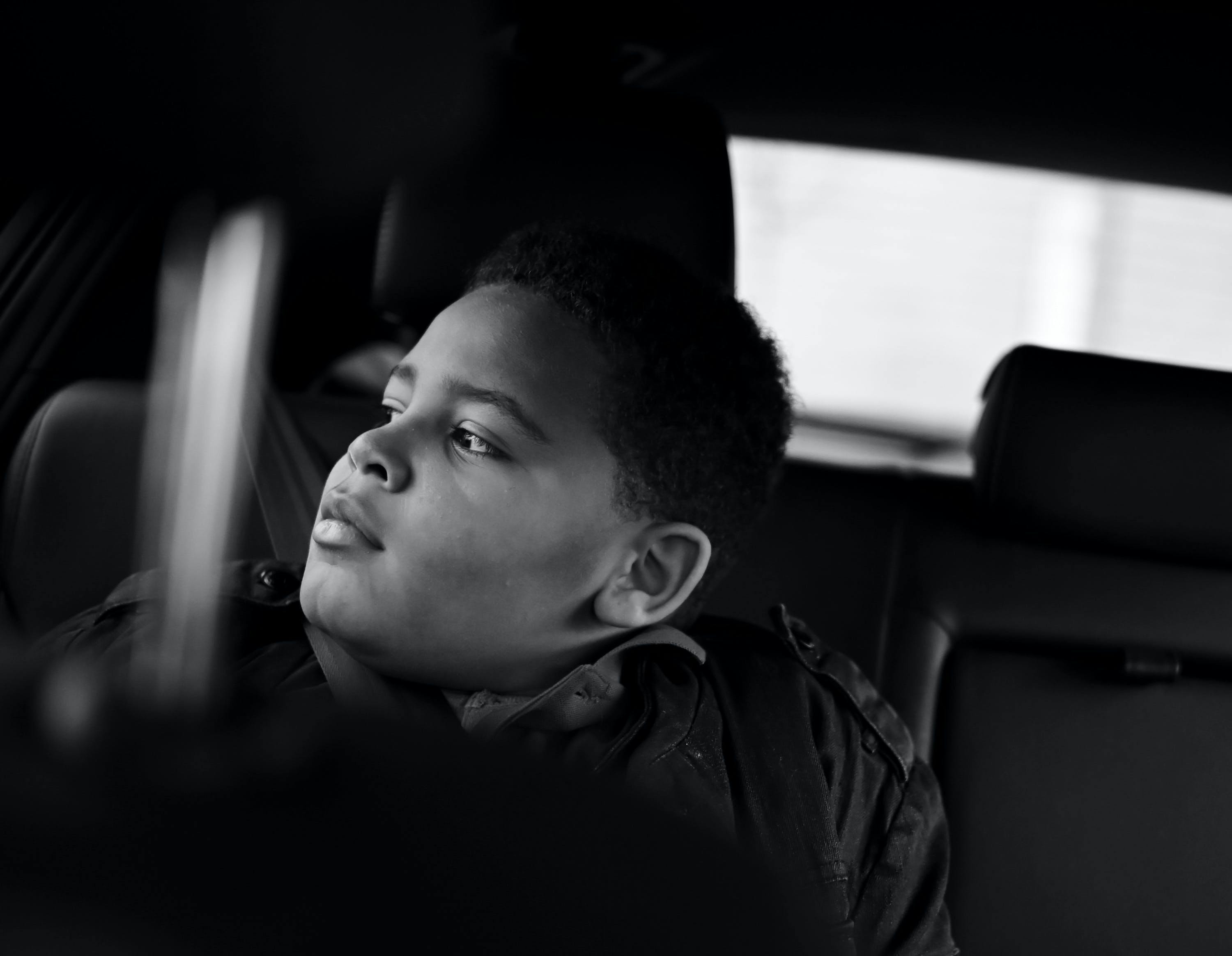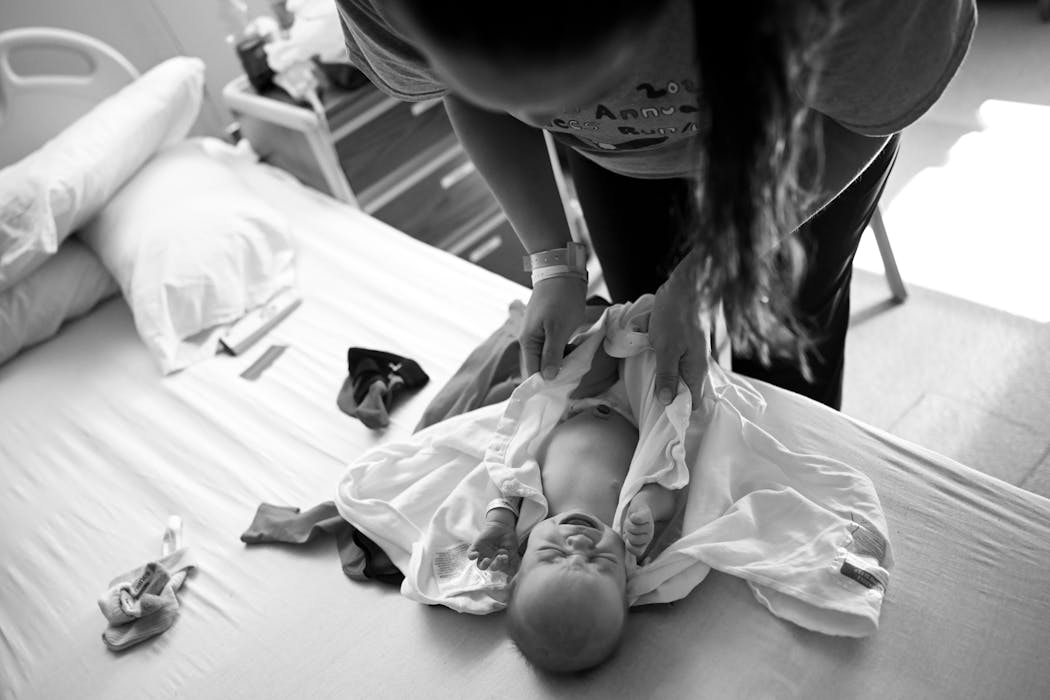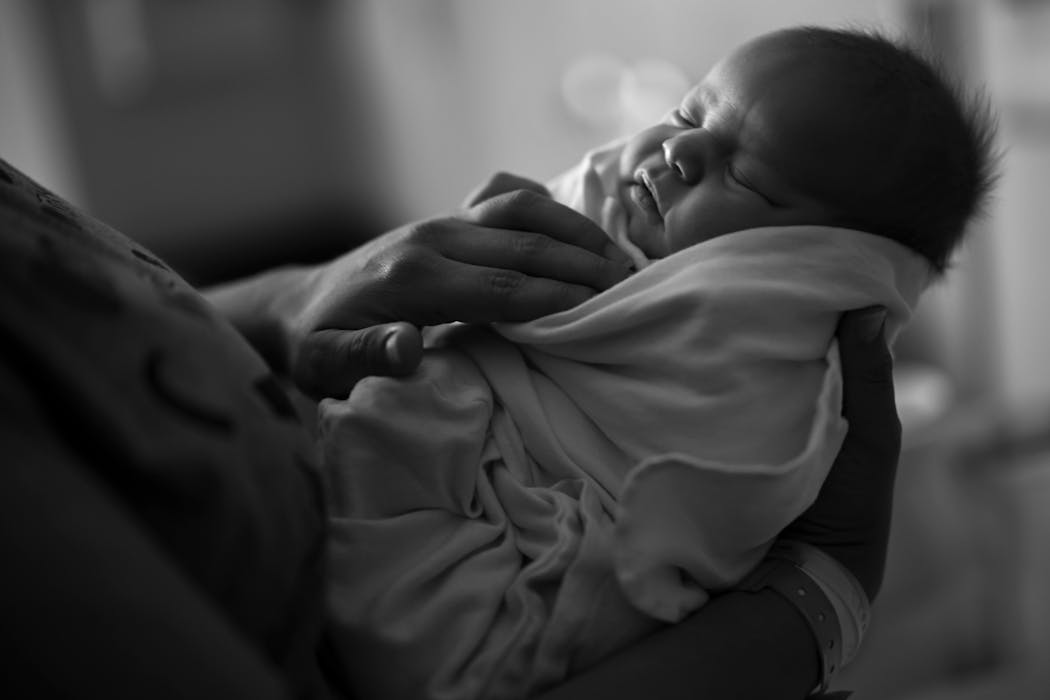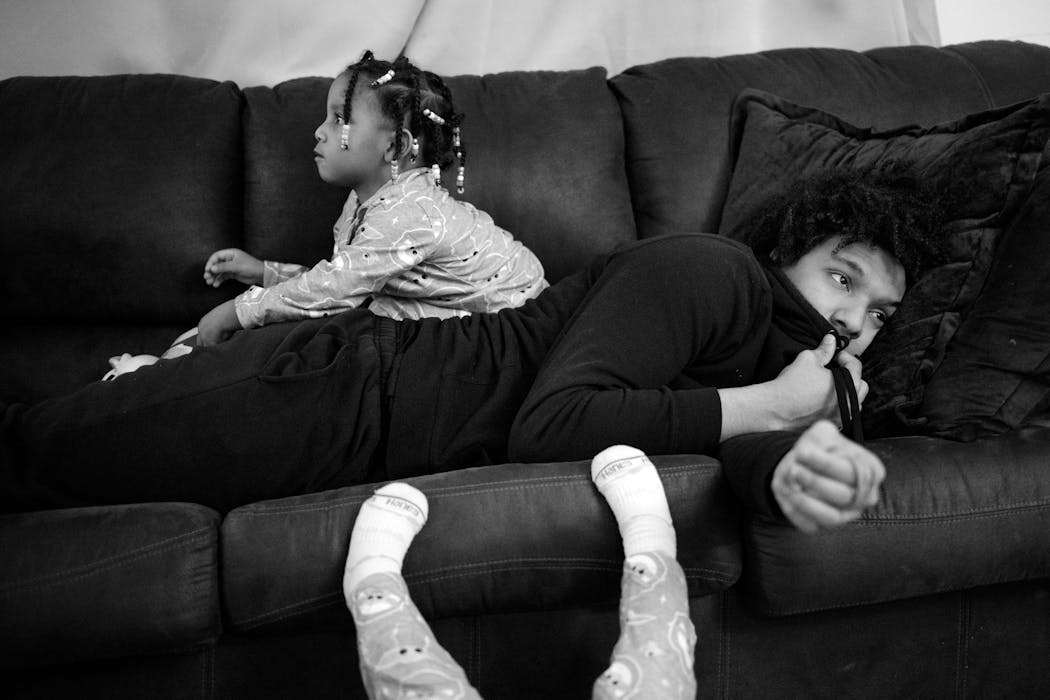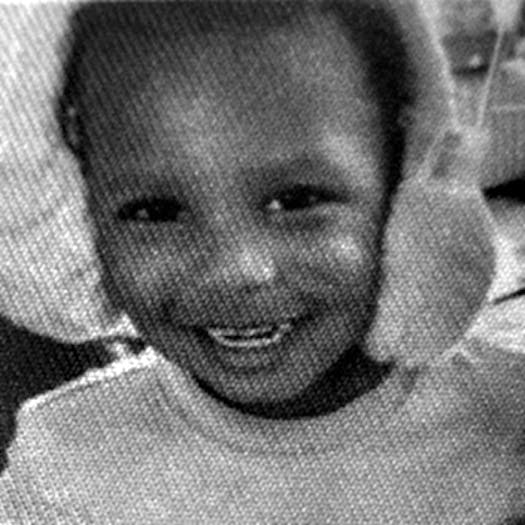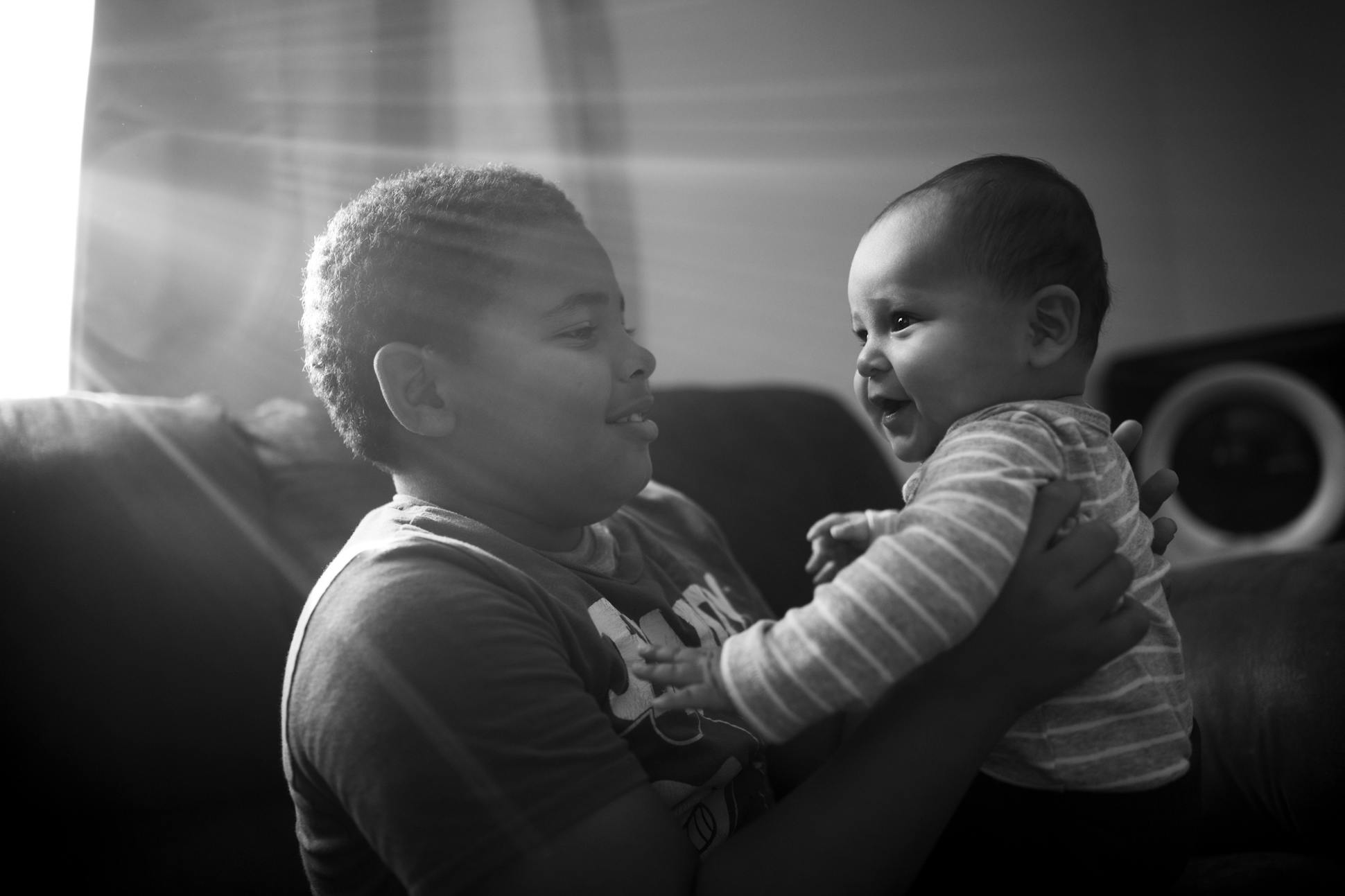In Harm's Way
This four-part series explores how Minnesota’s child protection system failed to save some of the state’s most vulnerable residents.
In hospitals across Minnesota, the piercing cries of newborns — whose arms clench and bodies shake as they withdraw from a drug their mother could not quit — serve as an early warning that a child may be at risk.
A parent's drug use is the top reason Minnesota children are taken from their care, but the state's system for identifying and protecting children whose parents are using fentanyl, meth or other substances is filled with holes.
State lawmakers loosened mandatory reporting requirements, leaving a patchwork of approaches to test for and report prenatal substance use. While the federal government requires local officials to develop care plans that ensure the safety and well-being of infants affected by drug or alcohol exposure, families rarely receive the coordinated, comprehensive plans that state policy recommends. And families seeking help face another obstacle: a critical shortage of treatment programs.
For those who fall through the cracks, the outcomes can be fatal.
A parent's or guardian's drug and alcohol use was a factor in the deaths of at least 16 children since 2012, all 3 years or younger, according to a Star Tribune review of child fatalities in families with some prior child protection involvement.
Five infants or toddlers died after ingesting fentanyl after birth. Several died in unsafe sleep situations in which a parent had been drinking or using drugs. Others died when they were born prematurely with drugs in their system.
Prenatal exposure or a caregiver's substance use were the primary reasons officials removed a child from home in about 40% of cases in 2021, according to the Minnesota Department of Human Services.
"These families and this critical crisis period — we don't have a couple opportunities to fail," said Caroline Hood, president and CEO of treatment provider RS EDEN. She serves on a new state task force that will spend the next year discussing reporting and testing substance use during pregnancy and post-birth.
As opioid use has surged across the country, many state and national lawmakers have sought to bolster prevention and treatment in a departure from the punitive policies of the crack cocaine epidemic, when Black families saw a disproportionate spike in drug arrests and children in foster care.
"The crack cocaine response was one of punishment, criminalization and family separation," said former DFL state Rep. Ruth Richardson, whose family fostered children during that drug crisis. In the decades since, she said Minnesota has failed to develop adequate supports for parents with addiction.
The state has four residential treatment centers where a parent can stay with a child. Providers said two others closed in the past few years.
"That's the answer and we know it's the answer," said Richardson, who previously led a treatment center. "We also don't have a system that makes it financially feasible for family treatment programs to continue to exist."
Rethinking reports and tests
The rise in infant exposure during the past decade has forced health care workers to get uncomfortably acquainted with a high-stakes risk analysis.
On one hand, many physicians worry about reporting prenatal substance use to local child welfare agencies. They don't want to criminalize addiction or damage the tenuous trust they are trying to build, particularly in Native American and Black communities where a history of medical discrimination has led people to avoid critical prenatal care.
On the other, they have seen parents with substance use disorder put children in dangerous — and sometimes deadly — situations.
"Maybe you save that baby by taking that baby out of that home," said Rachel Cooper, a doctor who works with drug-exposed infants almost every day at Sanford Bemidji Medical Center. "But maybe there are seven more babies, or three more generations of children, that are going to suffer because of further alienation in the community."
She cared for a child who later ingested opioids and others who died in unsafe sleep situations, she said. She also regularly sees mothers with substance use disorder who avoid all prenatal care and then deliver babies prematurely.
Drug abuse has become leading reason for removals
Caretaker drug abuse was the primary reason cited in nearly one-third of cases where children were removed from their homes in Minnesota in 2021. The next most common reason — alleged neglect — accounted for about 14% of removals. Other reasons, like physical abuse (7%) and sexual abuse (3%) have not changed as much.
A pregnant person who is reported to a child welfare agency for prenatal substance use is supposed to get assessed and referred to services, such as treatment. If they refuse services or fail treatment, the agency must seek an emergency hold in a treatment facility. After birth, if a baby tests positive for substances or goes through withdrawal — and it's not tied to a mother's use of a medication, such as methadone — then under state law it should be reported as neglect.
However, health care or social service professionals no longer have to report a pregnant person's use of illegal drugs as long as she continues receiving prenatal or postpartum care or other health services. Lawmakers changed the mandated reporting requirement two years ago.
The move came as national health organizations and studies warned that pregnant mothers were less likely to get adequate care and treatment and infants were more likely to experience withdrawal in states with punitive approaches to prenatal substance use.
Whether a pregnant person is tested or reported to welfare authorities for drinking or using drugs can depend on where they go or even which doctor they see.
Addiction work is about "playing the long game" by building trust and being ready to help someone when they want to change, said Lauren Graber, a Hennepin Healthcare family physician and addiction specialist.
"Oftentimes babies are that moment," Graber said. "We lose a lot of ground when that trust and work is either undermined by inconsistent procedures or a lack of coordination at the time of delivery."
The new state task force is supposed to recommend protocols for alerting child welfare agencies of prenatal exposure and conducting toxicology tests of a mother and baby. Many physicians are wary of the tests, which they say can be faulty and scare away patients. They are relying more on screening questions and monitoring.
Meanwhile, some social workers and child safety advocates fear less testing and reporting could mean they miss key chances to assist.
"Those babies are the ones that usually suffer," said Tracy Jones, a supervisor at Ramsey County's Mothers First program, which works with families struggling with substance use. "Because the parent wasn't tested and there weren't any interventions to help her along during that pregnancy."
'What happens after?'
Fentanyl exposure killed Derric Fulks Jr. in 2021, ending the life of a rambunctious toddler who loved sports and piggyback rides from his older brother.
The 3-year-old — nicknamed "Happy" by his grandfather — was found not breathing in his car seat after his mother drove Derric and his siblings to their grandmother's home. Police noted at the time that his mother appeared to be under the influence and could not explain what led to Derric's death.
Derric Fulks Jr.
Derric had tested positive for marijuana at birth. Before his first birthday, he was present during a drug raid when officials were searching for his father, according to a court document summarizing the family's child protection history. A couple of years later, his mother tested positive for THC after giving birth to his twin sisters. After each note of prenatal exposure the summary simply states, "No services."
Cynthia Bergeron, the children's grandmother, said prenatal exposure should prompt more follow-up.
"The due diligence isn't done," Bergeron said, adding that she understands concerns about involving child welfare authorities during pregnancy. "However, what happens after? … You're still putting that child in jeopardy after the baby comes into life and into the world."
When someone uses drugs while pregnant, a coordinated approach without criminal sanctions has the best chance of helping infants and families, according to the American College of Obstetricians and Gynecologists. The organization recommends "multidisciplinary long-term follow-up," including medical, developmental and social support.
There are many efforts to work with such families in Minnesota, but they are often siloed and limited. Hospitals create discharge plans. Certain counties — including Hennepin and Ramsey — have programs to support sober pregnancies. And county social workers make safety plans, which generally focus on the immediate safety of the child and include relatives or community support.
Local and national child advocates say those safety plans can be insufficient, particularly for young children. Dee Wilson, a former director of child welfare services for Casey Family Programs, said there is not enough monitoring of the plans, which he called "the weakest element of child protection practice nationally."
"It only takes one untoward event to kill an infant," Wilson said. "Infants are exceedingly vulnerable both to abuse and neglect, and that's why you have to have a practically infallible in-home safety plan."
Federally mandated plans of safe care are supposed to improve the outcomes for families with substance use.
In Minnesota, Department of Human Services officials said local child welfare agencies are responsible for the plans. The department's best practices say the plans should start before birth, if possible, and ensure communication between health providers, substance use disorder treatment staff, child welfare and other support agencies to meet the infants' and caregivers' needs.
Numerous doctors and treatment providers who work with families that would merit the plans said they are rarely involved in them or had not heard of them.
"I don't think there was any mechanism to enforce it. It's kind of been ignored," said Adrienne Richardson, medical director at HealthPartners' Healthy Beginnings Program, which she said is starting to incorporate the plans in their electronic records system.
It's one thing to make a plan of safe care, but what really matters is having the infrastructure to ensure infants and their families are referred to and receive services, said Cathleen Palm, founder of the Pennsylvania-based Center for Children's Justice.
Less than 23% of infants exposed to drugs prenatally in Minnesota who were screened into the child protection system had a referral to appropriate services, according to the latest U.S. Children's Bureau maltreatment report. That's among the nation's worst reported referral rates.
High demand, few options
Drug use surpassed alleged neglect in 2016 as the top reason Minnesota children are removed from their caregiver and placed in out-of-home care, according to the Department of Human Services.
The addiction recovery process can be long and often involves relapse, making timely reunions challenging. More than 95% of child protection administrators said substance abuse issues are often or always a barrier to reunification, according to a survey by the state Office of the Legislative Auditor.
Parents with substance use disorder said needed programs can be difficult to access.
"Addressing substance use disorder and its heartbreaking impacts on children and families requires a coordinated response across the human services spectrum," DHS Deputy Commissioner Nikki Farago said in a statement, noting that home visiting, residential programs and outpatient programs are all part of the puzzle. "We are working with medical facilities and community organizations to coordinate and improve services to pregnant people, parents and families so children can be safe and healthy."
Few treatment centers
Only four family residential treatment centers are operating in Minnesota, leaving broad geographic gaps across the state. Two other recovery centers — one in Sauk Rapids and another in Minneapolis — recently closed.
The state's family home visiting program serves at-risk households, including families with histories of substance use. Despite increased funding, officials estimate only 1 in 10 Minnesota families who need visiting services receive them.
Outpatient and home visiting programs are insufficient for some parents. But few residential treatment centers allow children.
"If we had a 100-bed facility, we could fill it," said Amy Morgan, CEO of Wayside Recovery Center, which has the metro's only family treatment center. It has room for 19 women and 16 kids. "The demand is there, but the waitlist is long and the funding lacks in so many ways."
Lawmakers approved $10 million in grants this year to bolster substance use disorder treatment programs that serve parents with their children.
But staff at family treatment centers said the rates they receive from the state don't come close to meeting the cost of caring for children. They get $224.06 daily for each high-intensity client. If a mom has children staying with her, the center gets an extra $14.34 a day, no matter how many kids she has.
Mothers said allowing children to stay with them encourages sobriety and ensures that those with newborns have support during a challenging time when the chance of relapse is high.
Jessica Steele landed at Wayside after she had relapsed and child protection removed her son in 2020. There, she said she got help understanding her mental health needs and finding medications that work for her, along with substance use disorder treatment. She also had a goal.
"I'm gonna get my son back and prove to my kids that I can be a mom again," Steele said. "I'm gonna make this work for a lifetime."
After more than three years of sobriety, she is a lead recovery advocate at Wayside and lives in south Minneapolis with her son and new daughter. But she said many other parents like her are too afraid to seek help or can't access services.
"We get calls every day," she said, but the center is at capacity. "We're in a crisis."
Staff writer Jeffrey Meitrodt and former staff writer Chris Serres contributed to this story.
About the project
In Harm's Way explores how Minnesota's child protection system fails to save some of the state's most vulnerable residents. Reporters began investigating in the wake of the 2022 death of Eli Hart, who was killed by his mother after being put back in her care.
To report on this topic, Star Tribune journalists spent more than a year examining thousands of documents, starting with more than 900 death certificates, dating back to 2011, that they cross-referenced with court records of child protection cases. Altogether, the reporters reviewed more than 1,000 child protection cases and dozens of related criminal cases statewide. They supplemented that information with data from state and federal reports on the child protection system.
To learn more about the individual cases, the Minnesota child protection system and best practices, reporters contacted hundreds of people, including families, social workers, guardians and state officials.
Credits
Reporting Jeffrey Meitrodt, Jessie Van Berkel, MaryJo Webster & Chris Serres
Photography Aaron Lavinsky
Photo editing Nicole Gutierrez, Emily Johnson & Katie Rausch
Digital design Dave Braunger
Graphics C.J. Sinner & Yuqing Liu
Editing Katie Humphrey & Eric Wieffering
Copy editing Adelie Bergström & Catherine Preus
Digital engagement Sara Porter, Nancy Yang, Amanda Anderson & Jenni Pinkley
How to get help
People can find mental health information and resources for crisis care on NAMI Minnesota's website, namimn.org. If you or someone you know is struggling with suicidal thoughts, call the 988 Suicide and Crisis Lifeline by dialing 988. You can also text HOME to 741741 to connect with a Crisis Text Line counselor.
If you or someone you know is in an abusive relationship, contact the Day One Hotline by calling 866-223-1111 or texting 612-399-9995.
If you suspect child abuse, report it to the county where the child lives. Contact information is at this link.
If you or someone you know is struggling with addiction, the Substance Abuse and Mental Health Services Administration's free national helpline at 1-800-662-4357.
Contact us
The Star Tribune is continuing to report on Minnesota's child protection system. We would like to hear from families, social workers, judges, guardians ad litem and others who have been involved in child protection. Our reporters will not share your information without your permission. You can reach Jeffrey Meitrodt at 612-673-4132 or jeff.meitrodt@startribune.com. Jessie Van Berkel is at 651-925-5044 or jessie.vanberkel@startribune.com. If you'd like to submit a letter or commentary about this story or series, use this link.

